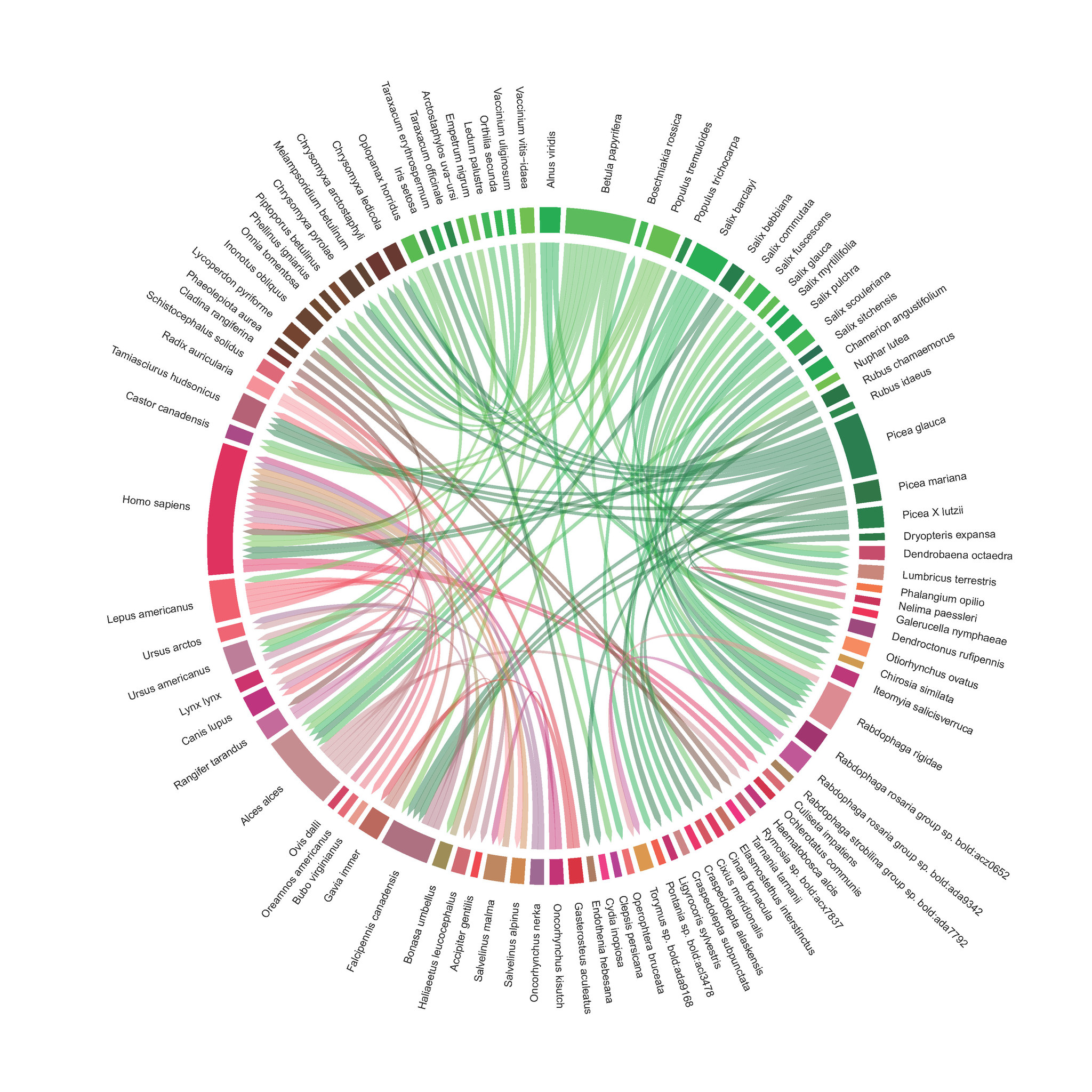In 2016, the Kenai National Wildlife Refuge passed a milestone of sorts. Over 2,000 species are now documented on the 2 million-acre refuge including 207 vertebrate animals, 788 invertebrate animals, 501 vascular plants, 181 mosses and liverworts, 368 fungi and 29 unicellular organisms. What helped push us over this second millennial was a concerted effort by Matt Bowser, refuge entomologist, to identify insects as well as the inclusion of 89 non-native species found on the Refuge in recent years.
Biodiversity is given almost mythical qualities by practitioners of Ecology. Diverse systems are more robust and resilient, less likely to collapse in response to something like a new insect pest. Unknown species may harbor medicinal attributes —perhaps the cure for cancer. Biodiversity also provides other ecosystem services to humans such as nutrient cycling, carbon sequestration, pest regulation and pollination, and the sustaining of agricultural productivity.
But, frankly, biodiversity is really about Life. After all, Earth is nothing more than our Ark, upon which we try our best to keep at least two of every living thing. Whether you believe species are nodes in an evolutionary process or created by a higher being, just stop and really consider how amazing it is that a tiny bundle of DNA produces life that is uniquely adapted for a niche defined by space and time, and constrained by interactions with other species. Edward O. Wilson, famed Harvard University professor, said “We should preserve every scrap of biodiversity as priceless while we learn to use it and come to understand what it means to humanity.”
How many species are there? A 2011 paper published in the journal PLOS used statistical modelling to estimate there are likely 8.7 million species (not counting bacteria) in the world. Unfortunately, less than 1.8 million species have actually been identified.
The good news is that between 15,000 and 18,000 new species are identified each year, about half of which are insects. The bad news is that it will take about 5 centuries to finish inventorying the Ark at this rate!
What’s uncomfortable about this low rate of identification is that somewhere between 0.01 and 0.1 percent of species go extinct each year, which translates to 900—9,000 species lost annually! So for every two species discovered by scientists, one disappears forever. Two steps forward, one step back.
What’s amazing is that even today, megafauna are being discovered. Consider that a new giant tortoise species was discovered last year in the Galapagos Islands made famous by Charles Darwin, the father of evolution.
In recent years, four new species were discovered on the Kenai Refuge. A 2014 article in the Annals of the Entomological Society of America describes two new species of parasitic figitid wasps, Phaenoglyphis kenaii and Alloxysta vicenti. A new species of smut fungus (Anthracoidea kenaica) and two moss species (Sphagnum kenaiense, S. bergianum) were first collected on the refuge.
And biodiversity can even be unexpectedly high on the Kenai when you look closely. Rob DeVelice, recently-retired Forest Service ecologist, identified 28 lichen species growing on a single Lutz spruce that was cut down off the Seward Highway and sent to Washington D.C. as the Capitol Christmas Tree in 2015. Kenai Refuge biologists have found as many as 105 plant and animal species associated with 100-meter-square plots surveyed in 2004 and 2006.
We continue to inventory the Refuge’s biodiversity. In recent years, we’ve begun identifying species through their DNA using Next Generation Sequencing. This analytical method spits out a barcode, a fragment of base pair sequence, which is then matched up with sequences from species previously identified by more conventional morphological means. To help this along, we’ve worked with Derek Sikes, the museum curator at the University of Alaska Fairbanks, to barcode almost half of the 8,300 arthropod species known for Alaska. This success story was recently published in the journal Genome.
With our new ability to rapidly identify otherwise cryptic species with genetics, we’ve begun thinking seriously about doing an exhaustive (not just comprehensive) inventory of species. This is sometimes called an All Taxa Biodiversity Inventory (ATBI), originally pitched by Dan Janzen, an evolutionary ecologist at the University of Pennsylvania. Biologists at the Great Smoky Mountain National Park started the first ATBI in 1997, where they have since documented more than 15,000 species, and believe as many as 55,000 more taxa may live there.
Biodiversity decreases as you move away from the equator toward the poles, so it may be more fitting to look at the Swedish Taxonomy Initiative, another ATBI, but one that is at the same latitude as the Kenai Peninsula. There, they expect to eventually document as many as 50,000 species of multi-celled organisms, quite a bit more than we’ve documented to date. Although Sweden is 18 times larger than the Kenai Peninsula and so should have greater biodiversity, it does suggest we still have much work to do.
It makes sense we should continue down this path. Kenai Refuge shares a legislative purpose with the other 15 Alaska Refuges to “conserve fish and wildlife populations and habitats in their natural diversity”. The 1980 Alaska National Interest Lands Conservation Act further defines “fish and wildlife” as “any member of the animal kingdom including without limitation any mammal, fish, bird, amphibian, reptile, mollusk, crustacean, arthropod or other invertebrate”. That’s a tall order, but one that’s well worth the effort.
Dr. John Morton is the supervisory biologist at Kenai National Wildlife Refuge. Find more information about the Refuge athttp://www.fws.gov/refuge/kenai/ or http://www.facebook.com/kenainationalwildliferefuge.

